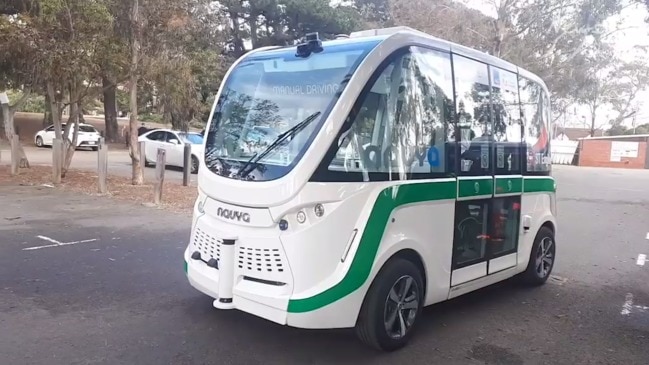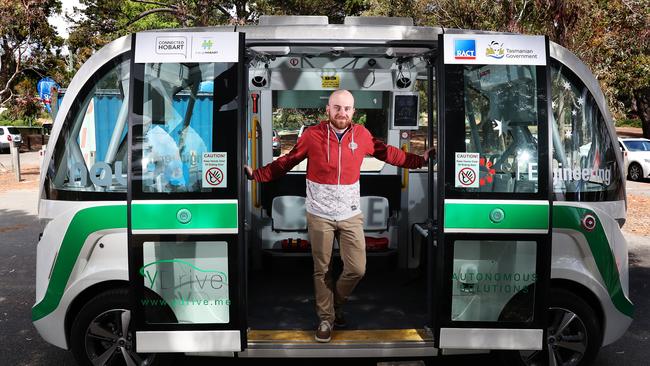Take a ride on Hobart’s first driverless electric bus
It is being hailed as a dramatic shift in public transport for Hobart ... but the city’s first driverless bus has had a bumpy start.

Lifestyle
Don't miss out on the headlines from Lifestyle. Followed categories will be added to My News.
HOBART’S move towards a brave new world of public transport hit a minor speed bump today when a driverless bus carrying media encountered technological issues.
The electric vehicle is being hailed as one of the first steps in a “dramatic shift in the future of transport.”
The buses will not be operating on the streets of Hobart for at least a year or two, but when rolled out aim to service short trips near the city centre, the Lord Mayor Anna Reynolds said.
“We’d really like to take the next step and introduce something that is a more permanent feature of the city of Hobart, perhaps servicing the waterfront or somewhere around the city where there’s a need for a slow moving accessible vehicle that can provide people with a short trip,” Ald Reynolds said.

Ald Reynolds said the city needed to make sure Hobart was keeping up with new trends.
“The world of transport is changing dramatically and in the next 10 or 20 years our transport sector, how we get around, will be fundamentally different to how it is today,” she said.
“There’s a lot of work to do but this is the future, the world of transport is changing dramatically and we need to make sure we’re trialling things.”
The service will be trialled on the roads of Lower Sandy Bay until December 13, in a first for Tasmania.
Stakeholders and RACT members will be able to step on-board the NAVYA Autonom Shuttle throughout the week, which will be travelling around a set route at 20km/h.
RACT executive manager, membership and community Stacey Pennicott said the trial will allow for the RACT, the Hobart City Council and the State Government to assess the issues of bringing the technology into the real world.

“We’re looking to understand the technology further, to understand the limitations,” Ms Pennicott said.
When the Mercury was on-board the bus, it encountered some technological errors and NAVYA engineer Francois Pollet was called to the site.
Mr Pollet said the shuttle, which is currently running in more than 20 countries around the world, should make people feel safe.
“You can still have people who are worrying about this kind of technology, but it’s really safe,” Mr Pollet said.
A trained operator will be on the bus at all times during the demonstration. They will activate the doors, and start the bus on the pre-planned route via a touchscreen located within the cabin.


